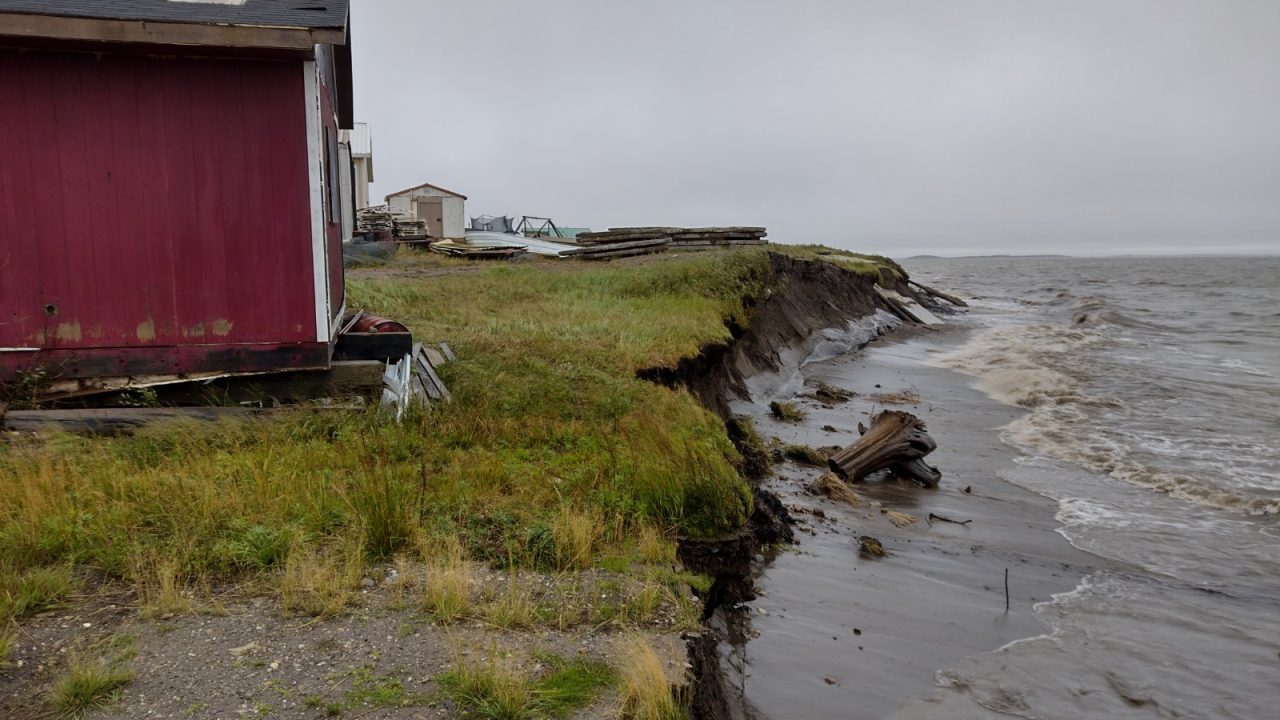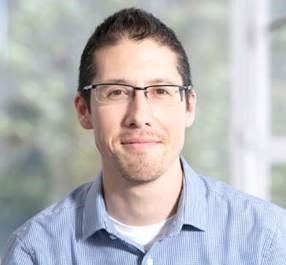Nuna – Changing ground conditions, Community resilience, technological solutions
Project overview
Nuna: Effective mitigation and adaptation to changing ground conditions for resilient coastal futures
Nuna : mesures efficaces pour atténuer les changements des conditions du sol et s’y adapter pour assurer la résilience des zones côtières dans l’avenir
Nuna: Ihuaqtut ihuaqhautighat aulattiarniqlu aallannguqpalliayumi nunam qanurininganiit hakugiktumik hinaani hivunighaqariamik
ᓄᓇ: ᐱᔪᓐᓇᑦᑎᐊᕋᓱᐊᕐᓗᑎᑦ ᐃᓕᑦᑐᕐᓗᑎᓪᓗ ᐊᓯᔾᔨᖅᑐᓂᑦ ᓄᓇᓂᑦ ᒪᑭᒪᔾᔪᑎᖃᑦᑎᐊᕋᓱᐊᕐᓗᑎᓪᓗ ᓯᔾᔭᖏᓐᓃᑦᑐᓂᑦ ᓯᕗᓂᑦᑎᓐᓂ
The Nuna (Inuvialuktun for ‘land’, ‘country’ and ‘soil’) Project draws together a diverse and interdisciplinary team that will co-produce with communities regionally appropriate new tools and solutions to prevent, mitigate, and adapt to their prioritised impacts. Nuna will equip and train community climate monitors to develop more accurate predictions of future erosion rates to know when to relocate and to assess and monitor ground conditions at potential relocation sites to ensure resilient development strategies. New low-cost monitoring technologies will provide early warning for preventative action and assess the success of nature-based solutions to ground instability and its wider threats and impacts.
Project location

Project images
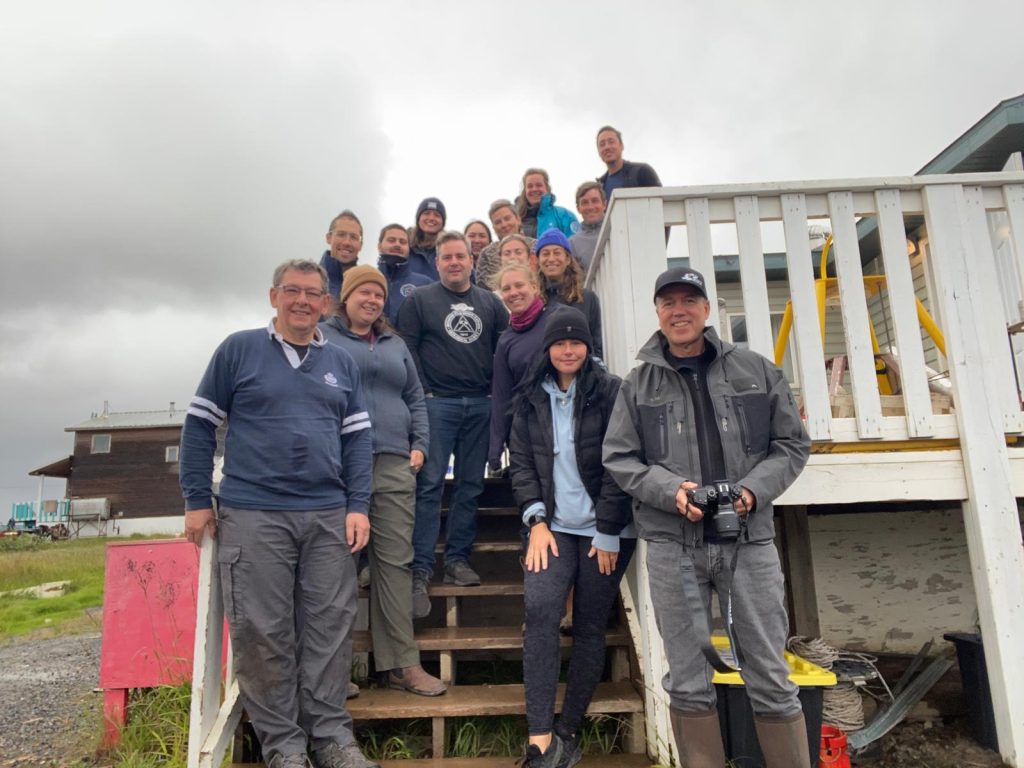
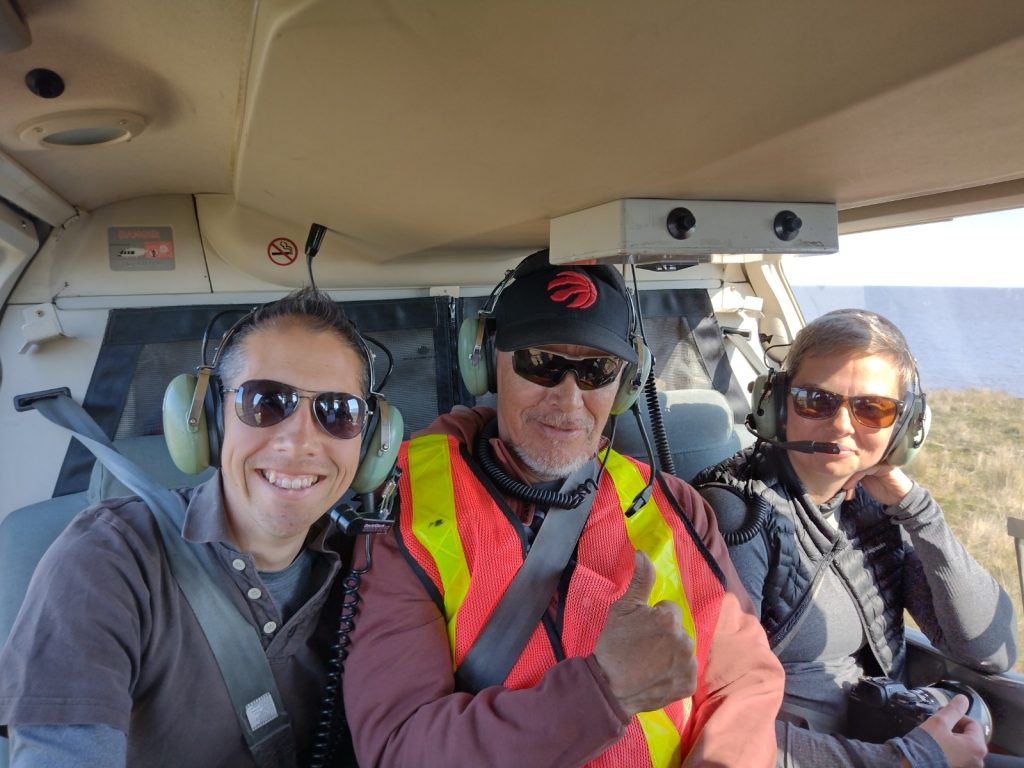
Summary
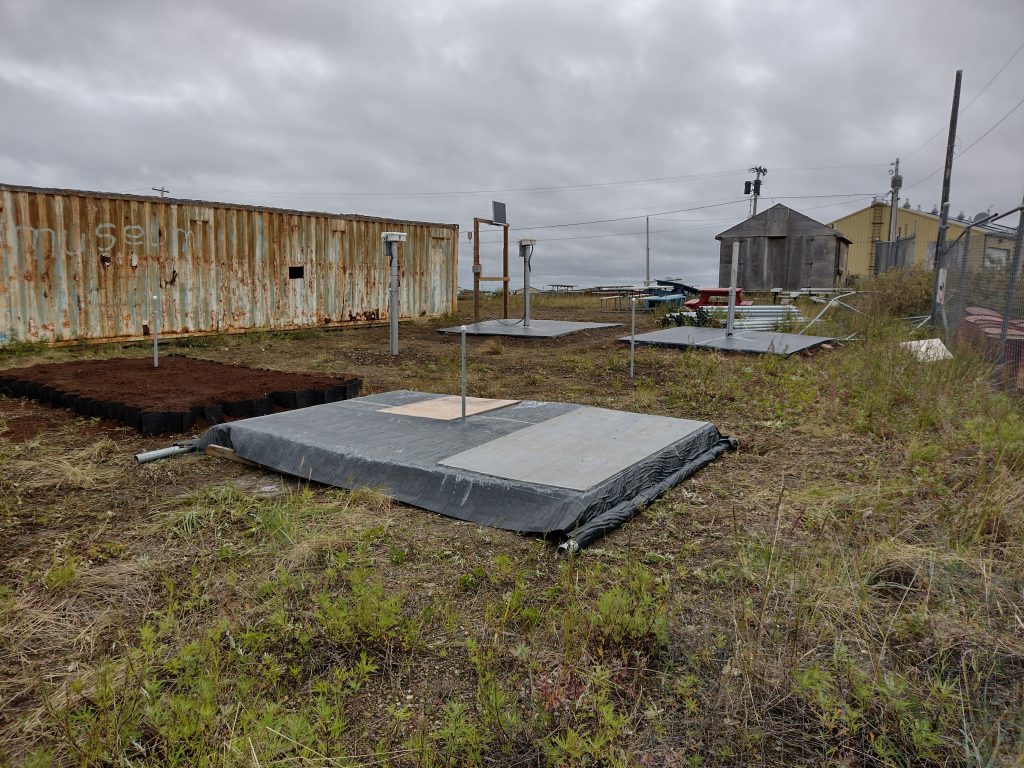
Across Inuit Nunangat, critical infrastructure, navigation routes, food and water security, and cultural sites are threatened by the multifaceted nature and increasing intensity of coastal landscape changes. The potential physical impacts of these changes on people are clear, but the extent and timing of future trends remains uncertain and the wider effects on mental health and on social, economic, and cultural wellbeing within the community remains poorly understood. The Nuna (Inuvialuktun for ‘land’, ‘country’ and ‘soil’) Project draws together a diverse and interdisciplinary team that will co-produce with communities regionally appropriate new tools and solutions to prevent, mitigate, and adapt to their prioritised impacts. Nuna will equip and train community climate monitors to develop more accurate predictions of future erosion rates to know when to relocate and to assess and monitor ground conditions at potential relocation sites to ensure resilient development strategies. New low-cost monitoring technologies will provide early warning for preventative action and assess the success of nature-based solutions to ground instability. Nuna will also provide accessible new information on the real-time health threats from air quality changes from emerging dust sources in the changing landscape and from water-based threats such as driftwood or contaminants released during storm events.
Dans tout l’Inuit Nunangat, les infrastructures essentielles, les voies de navigation, la sécurité alimentaire et hydrique et les sites culturels sont menacés par la nature multiforme et l’intensité croissante des modifications du paysage côtier. Les impacts physiques potentiels de ces changements sur les personnes sont clairs, mais l’étendue et le calendrier des tendances futures restent incertains et les effets plus larges sur la santé mentale et sur le bien-être social, économique et culturel au sein de la communauté restent mal compris. Le projet Nuna (Inuvialuktun pour « terre », « pays » et « sol ») rassemble une équipe diversifiée et interdisciplinaire qui coproduira avec les communautés de nouveaux outils et solutions appropriés au niveau régional pour prévenir et atténuer leurs impacts prioritaires et s’y adapter. Nuna équipera et formera des observateurs climatiques communautaires afin d’élaborer des prévisions plus précises des taux d’érosion futurs pour savoir quand se relocaliser et pour évaluer et surveiller les conditions du sol sur les sites de relocalisation potentiels afin de garantir des stratégies de développement résilientes. De nouvelles technologies de surveillance à faible coût permettront de donner l’alerte pour une action préventive et d’évaluer le succès des solutions naturelles à l’instabilité du sol. Nuna fournira également de nouvelles informations accessibles sur les menaces sanitaires en temps réel que représentent les changements de qualité de l’air dus à l’apparition de nouvelles sources de poussière dans le paysage en mutation et les menaces liées à l’eau, comme le bois de marée ou les contaminants libérés lors des tempêtes.
Inuit Nunangani tamaat, ihariagiyauyut ikluqpaghat, ikaaqviit, niqighaqattiarniq imaqattiarniqlu, inituqliminiit amirnaqhiyut amihunit pitquhiuliqtunit aallannguqpalliayumillu hinaani nunat pitquhiit. Timingnut ihuilutaulaaqtut aallannguqpalliayunit inungnut naunaittuq, kihimi hivitunia kayumingnialu hivunighami atuqtauvalliayut naunaqtuq huli mihingnautaillu ihumaqattiarniqmut inuuhiqattiarniqmullu, manighiurniqmut, pitquhiqattiarniqmullu nunallaarni huli ilihimayauttianngittuq. Nuna (Inuvialuktut “maniraq”) Havaaghait katitirivaktuq aallatqiingnik havaqatigiingniklu hanaqatigiiktughat nunallaallu aviktuqhimayumi ihuaqtunik nutaanik hanalrutiqaqlutik ihuaqhaitjutiqaqlutiklu pittailiyaamik, ihuaqhaiyaamik, aulattiariamiklu irinigiyainut ihuilutinut. “Nuna” hunaqutighaqaqtittiniaqtut ilihailugillu nunallaarni hilamik munaqtighanik nalaumavalliayumik naahurinahuariamik hivunighami nunguvalliayut ilihimayaamik qakugu nuuttaamik qauyihaiyaamik munariyaamiklu nunam qanuriningania nanikiaq nayugaghanut taimaa hakugighailutik hanauhiqariamik. Nutaak akikittut munaqtiuyut ingilrutait ilittuqhitinariutighanut ikayuutauniaqtut pittailiniqmut hanaqinaririamik qauyihaiyaamik aulattiarninga pitquhituqhutik ihuaqhautait nunami qayangnaqtumi. “Nuna” atuqtauyughanik nutaanik naunaitkutaqaqlutik talvani qaritauyakkuurutinit atuqtauyut tajja naunaitkutainik nuivalliayunit ihiqtuyunit aallannguqpalliayumi nunami imaqmillu amirnautinit taapkuatut tighiqtut qiyuit halumailruillu hiamitiyauvaktut anuqhiqyuaqtumi.
ᐃᓄᐃᑦ ᓄᓇᖓᓐᓂ, ᐊᐅᓚᑦᑎᔾᔪᑎᖃᑦᑎᐊᕆᐊᖃᕐᓂᖏᑦ, ᓇᒧᓐᖓᖅᑐᓄᑦ ᐊᖅᑯᑕᐅᓂᖏᑦ, ᓂᖀᑦ ᐃᒥᖃᕆᐊᖃᕐᓃᓪᓗ, ᐱᖅᑯᓯᑐᖃᒃᑯᑦ ᐊᑐᖅᑕᐅᓲᑦ ᐅᓗᕆᐊᓇᖅᑐᒦᓐᓂᖏᓐᓂ ᐊᒥᓱᓃᓐᖔᖅᑐᖅ ᓄᓇᓂᑦ ᐊᒻᒪᓗ ᐊᔅᓱᕈᓐᓇᖃᑦᑕᕐᓂᖏᓐ ᓯᔾᔭᑦ ᐊᓯᔾᔨᐸᓪᓕᐊᓂᖏᓐᓂ. ᑕᑭᖏᓪᓕᑦ ᐊᑦᑐᐃᓂᖃᕐᓂᖏᑦ ᑕᒪᒃᑯᓂᖓ ᐊᓯᔾᔨᖅᑐᓂᒃ ᐃᓄᓐᓂᑦ ᓇᓗᓇᓐᖏᑦᑕᐅᑎᒋᔪᖅ, ᑭᓯᐊᓂᓕ ᖃᓄᑎᒋᐅᒻᒪᖔᖅ ᖃᖓᒃᑰᒐᔭᕐᒪᖔᕐᓗ ᓯᕗᓂᑦᑎᓐᓂ ᓇᓗᓇᐃᖅᑐᖅ ᐊᒻᒪᓗ ᖃᓄᑎᒋ ᐊᑐᐃᓂᖃᕐᓂᐊᕐᒪᖔᖅ ᐃᓱᒪᑦᑎᓐᓄᑦ ᐃᓄᓐᓄᑦ, ᐱᕙᓪᓕᐊᓂᕐᒧᑦ ᐊᒻᒪᓗ ᐱᖅᑯᓯᖏᑎᒍᑦ ᓄᓇᓕᓐᓂ ᓱᓕ ᑐᑭᓯᔭᔅᓴᐅᖏᑦᑐᖅ. ᓄᓇ (ᐃᓅᕕᐊᓗᑦᑐᑦ “ᓄᓇ”, “ᓄᓇᑐᖃᖅ” ᐊᒻᒪᓗ “ᐃᔾᔪᒃ”) ᐱᓕᕆᐊᔅᓴᐅᔪᓂᒃ ᐊᔾᔨᐅᖏᑦᑐᓂᑦ ᐱᓕᕆᔪᓐᓇᖅᑐᓄᑦ ᑲᒪᒋᔭᐅᓗᑎᒃ ᓄᓇᓕᓐᓂ ᐃᓚᖃᕐᓗᑎᑦ ᓄᑖᕐᓂᑦ ᓴᓇᕐᕈᑎᖃᕐᓗᑎᑦ ᐋᖅᑭᐅᒪᔾᔪᑎᔅᓴᓂᓪᓗ ᖃᓄᐃᑦᑕᐃᓕᒪᑎᑦᑎᓇᓱᐊᖅᓯᓐᓈᕐᓗᑎᑦ, ᐃᓕᑦᑐᕐᓗᑎᓪᓗ ᓯᕗᓪᓕᖅᐸᐅᑎᒋᐊᓕᓐᓂᒃ ᐊᑦᑐᐃᓂᖃᕋᔭᖅᑐᓂᒃ. ᓄᓇ ᓱᓇᒃᑯᑖᖃᕐᓗᑎᑦ ᐃᓕᓐᓂᐊᑎᑦᑎᓗᑎᓪᓗ ᓄᓇᓕᓐᓂ ᓯᓚ ᖃᓄᖅ ᐅᔾᔨᖅᓱᕆᐊᖃᕐᒪᖔᑦᑎᒍ ᒥᔅᓴᐅᓴᒍᓐᓇᓂᖅᓴᕆᒐᔭᕋᑦᑎᒍ ᓯᕗᓂᑦᑎᓐᓂ ᓄᓇᓂᑦ ᓱᖁᓪᓗᐃᔪᑦ ᓯᔾᔭᓱᕐᒥᑦ ᖃᖓᒃᑯᓪᓗ ᑕᒪᒃᑯᐊ ᑲᒪᒋᔭᕆᐊᖃᕐᒪᖔᑦᑎᒍ ᖃᐅᔨᒪᒐᔭᕋᑦᑕ ᐅᔾᔨᓱᑦᑎᐊᕐᓗᒋᑦ ᐊᓯᐊᓅᖅᑕᐅᔭᕆᐊᖃᕐᓂᖅᑲᑕᓘᓐᓃᑦ ᐃᓱᒪᒋᔭᕆᐊᖃᕋᔭᕐᒥᒐᑦᑎᒍ ᐊᒻᒪᓗ ᓴᓐᖏᓇᓱᐊᕐᓗᑎᓪᓗ ᐸᕐᓇᐅᑎᓕᐅᕐᓗᑕ. ᓄᑖᕐᓂᑦ ᐊᑭᑐᓗᐊᓐᖏᑦᑐᓂᑦ ᐅᔾᔨᖅᓲᑎᖃᕐᓗᑎᑦ ᓯᕗᓂᖓᓂ ᖃᓄᐃᑦᑕᐃᓕᒪᑎᑦᑎᓇᓱᐊᕐᓗᑎᑦ ᐊᒻᒪᓗ ᑲᔪᓯᑦᑎᐊᕋᓱᐊᕐᓗᑎᑦ ᐋᖅᑭᐅᒪᔾᔪᑎᔅᓴᓂᒃ ᐊᑲᐅᓐᖏᓕᐅᕈᑎᐅᔪᓂᒃ ᓄᓇᒥᑦ ᑐᓐᖓᕕᔅᓴᐅᑦᑎᐊᕈᓐᓃᖅᑐᒥ. ᓄᓇ ᓄᑖᕐᑦᓂ ᑐᑭᓯᒋᐊᕈᑎᓂ ᖃᐅᔨᒃᑲᓐᓂᕈᓐᓇᖅᑐᒍᑦ ᐋᓐᓂᐊᖅᑕᐃᓕᒪᓂᕐᒧᑦ ᐅᓗᕆᐊᓇᕈᓐᓇᖅᑐᓂᒃ ᐊᓂᕐᓂᑎᓐᓄᑦ ᐊᓯᔾᔨᐸᓪᓕᐊᑎᓪᓗᒍ ᓲᕐᓗ ᐳᔪᕐᓗᓐᓂᑦ ᐊᓯᔾᔨᐸᓪᓕᐊᒻᒪᑦ ᓄᓇ ᐃᒪᕗᓪᓗ ᕿᔪᐃᓪᓗ ᓯᓗᐃᑦ ᐅᕝᕙᓘᓐᓃᑦ ᓱᕈᓐᓇᖅᑐᓂᑦ ᓴᖅᑭᐸᑦᑐᓂᑦ ᓯᓚᑲᒻᒫᓘᓚᐅᖅᑎᓪᓗᒍ.
People
Principal investigators
Co-investigators and collaborators
-
Robert McLeman
Co-Investigator
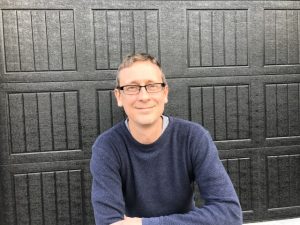
-
Paul Mann
Co-Investigator
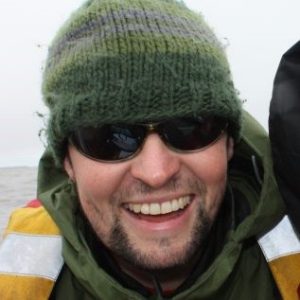
-
Anil Namdeo
Co-Investigator

-
James Martin
Co-Investigator

-
John Woodward
Co-Investigator

-
DevaLynn Pokiak
Community Liaison Officer
-
Zhaohua Chen
Co-Investigator
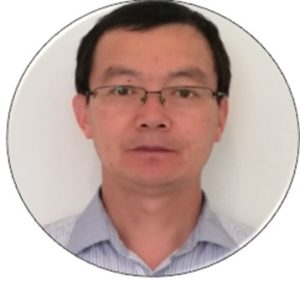
-
Juan Hiedra Cobo
Co-Investigator

-
Louise Mercer
PhD Student
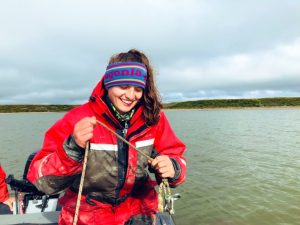
-
Michèle Tomasino
Collaborator
-
Enda Murphy
Collaborator
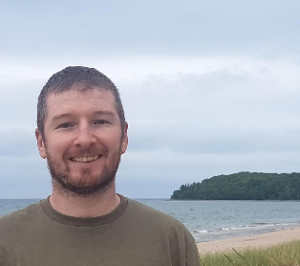
Publications
-
Louise Mercer , Deva-Lynn Pokiak, Dustin Whalen, Michael Lim, and Paul James Mann (2024). “Empowering Indigenous-Led Contaminant Monitoring through Collaborative Partnerships and Two-Way Capacity Sharing.” Arctic Science, 23 October 2024 doi: https://doi.org/10.1139/as-2023-0079
Associated project: Nuna - Changing ground conditions, Community resilience, technological solutions -
Louise Mercer , Dustin Whalen, Deva-Lynn Pokiak, Michael Lim and Paul J Mann (2023). “Ensuring continuity and impact in Arctic monitoring: a solution-orientated model for community-based environmental research.” Louise Mercer et al 2023 Environ. Res.: Ecology 2 045001 doi: https://iopscience.iop.org/article/10.1088/2752-664X/ad0241
Associated project: Nuna - Changing ground conditions, Community resilience, technological solutions -
Louise Mercer , Dustin Whalen, Michael Lim, Kendyce Cockney, Shaun Cormier, Charlotte Irish and Paul J Mann (2023). “Towards more inclusive and solution orientated community-based environmental monitoring.” Louise Mercer et al 2023 Environ. Res. Lett. 18 064003 doi: https://iopscience.iop.org/article/10.1088/1748-9326/accfb0
Associated project: Nuna - Changing ground conditions, Community resilience, technological solutions
